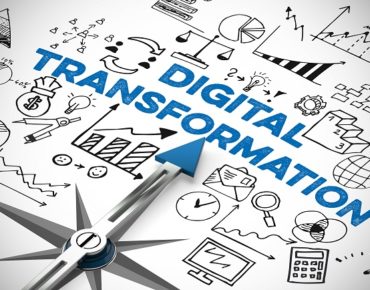Transforming Your IT ‘Home’ while Preserving Legacy Investments

via Shutterstock
Sooner or later, every home needs updating. Styles come and go, needs evolve, core attributes come to the end of their lifecycle. But tearing down the house, or taking it back to the studs, usually isn’t the right approach. This may be because of the expense involved, but more often, the owner determines a complete overhaul isn’t required. In these cases, a long-term plan is developed, starting with the highest-priority needs like the bathroom and master bedroom, then moving on to other areas over time. This is fiscally sound and allows the owner to continue using the home while transforming it.
Similar tradeoffs are involved when establishing a digital transformation strategy. For most organizations, their IT infrastructure, tools and processes have been in place for years. To attain competitive advantage, growth and scale, profitability, customer satisfaction and speed-to-market, two paths must be considered:
- Start over from scratch: This approach will likely deliver the exact specifications you want, but the time, cost and inconvenience will be high, and the risk palpable.
- Build on to what exists: By focusing on core needs first and methodically building toward a long-term plan, you are likely to optimize savings and convenience, at lower risk, by avoiding the disruption to established processes and degrading ROI on existing investments.
For most, the prudent approach is the latter. If an organization can modernize existing technology and extend current investments with software that bridges the old and the new, they will be in a stronger position and have the ability to run AND transform the business – and do it on their own terms.
But how does one get started in a way that balances speed, quality and cost? Here are some best practices gleaned from top global IT professionals:
1) Focus on Core Elements
With every project, there are critical factors for lasting success. With digital transformation, core elements include:
- Build and Deliver Faster with Enterprise DevOps – Reduce operational friction with automation and enhanced collaboration, boost business confidence knowing that quality and security are optimized, and deliver better outcomes with a level of ongoing assessment and course correction on core business processes.
- Run and Transform with Hybrid IT Management – Deliver services on demand and generate operational and business insights to extend existing investments and take advantage of new platforms – from containers, to public clouds, to IoT.
- Analyze in Time to Act with Predictive Analytics – Learn more about unmet customer needs, under-funded parts of the business and emerging business models to drive the top line. At the same time, advanced analytics can help organizations more efficiently identify what data it needs to protect, processes that can be expedited and more.
- Protect What Matters Most with Security, Risk & Governance – Safeguard the assets that matter most: identities, applications and data. This is important all the time, but perhaps never more relevant than during a period of transition, when processes and technology are evolving.
2) Be Wary of Loosely Connected Building Blocks
In home remodel, it’s common to purchase appliances, furniture, artwork and other non-core elements from various suppliers. But core elements, such as plumbing, electrical and roofing, to multiple suppliers wouldn’t make sense because these pieces must work together seamlessly.
The IT market is similarly vast. There are thousands of software vendors addressing slivers of digital transformation, but they rarely interoperate with the rest. Look instead for single-sourced solutions from large, established vendors that prioritize integration across a broad portfolio to minimize hidden downstream risk.
3) Adopt a Partner Strategy for the Long Haul
As with a general contractor, an IT vendor should serve immediate and long-term needs. Those needs may evolve or you may go through a period of growth or contraction (either organically or through M&A) that can impact your IT objectives. It’s therefore critical to identify a viable partner that will be in business down the road that has the resources to support change, to help customers adapt and the technical acumen to deliver.
As with all remodeling projects, the blueprint isn’t always enough. One must look beyond the ideal end product to the key strategic building blocks required to ensure lasting success with digital transformation.
Joe Garber is global head of strategy & solutions at Micro Focus.










